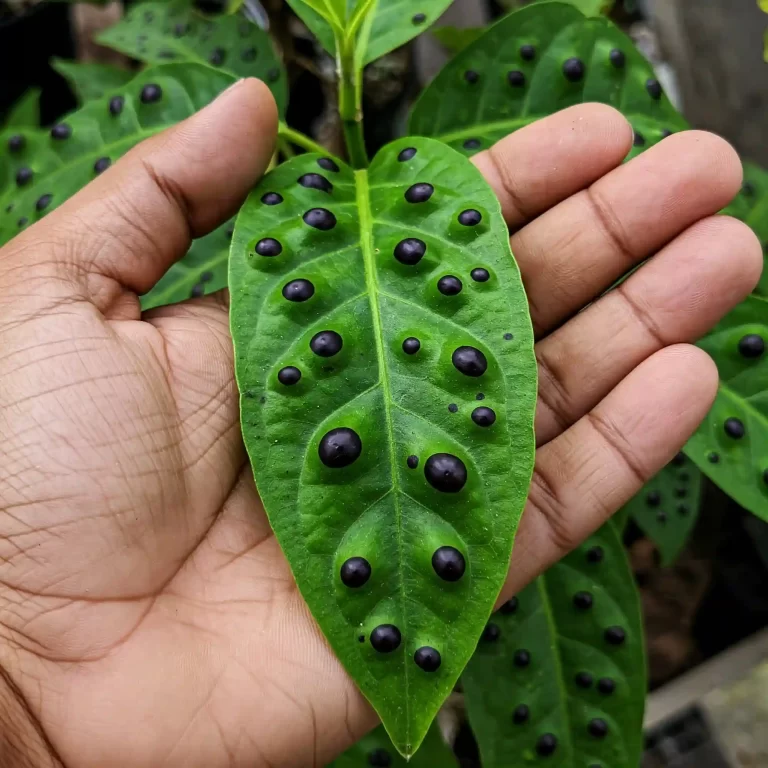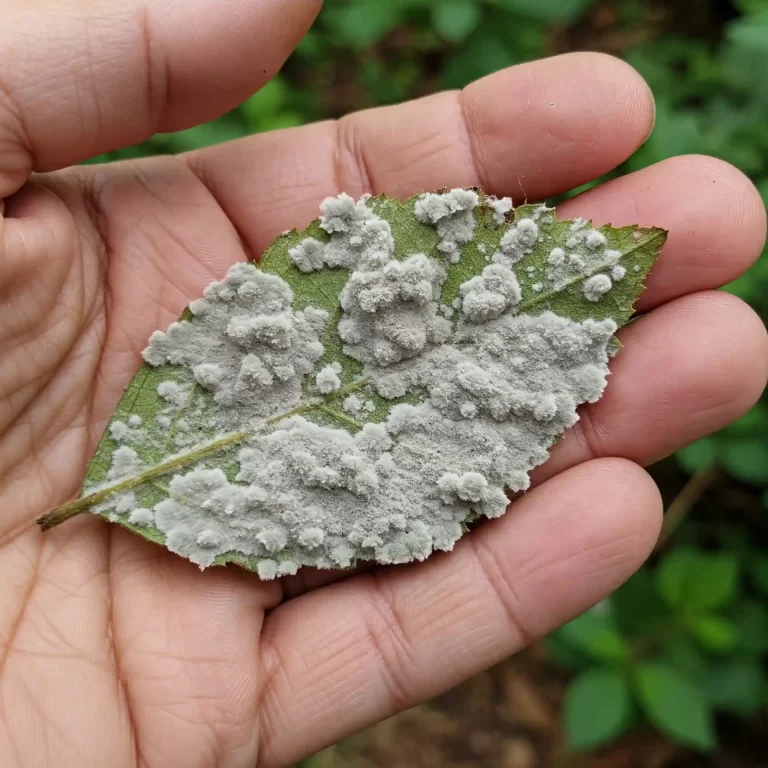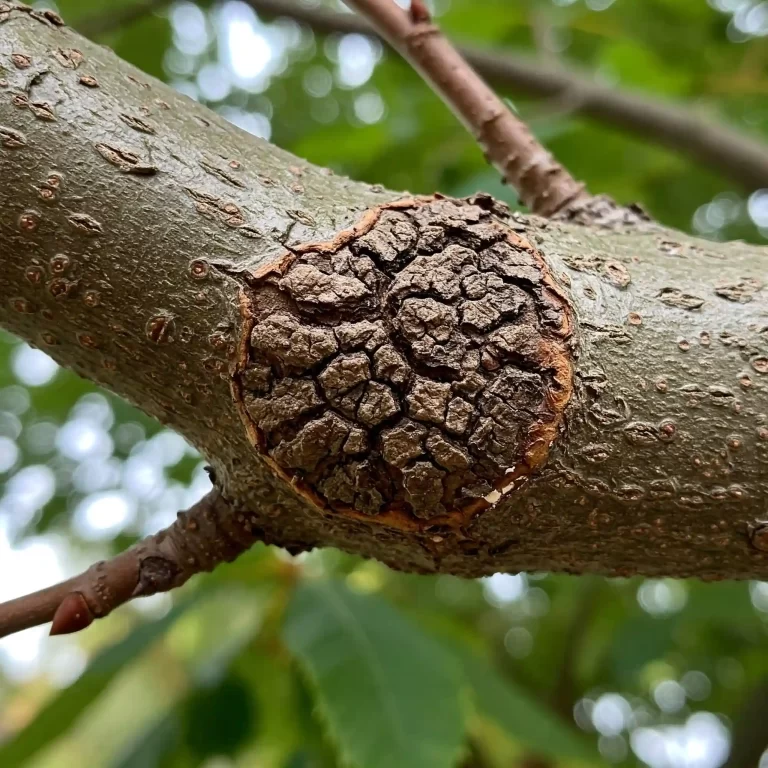Have you ever watched your lush sugarcane fields, the fruit of months of hard work, slowly succumb to a debilitating orange dust? It’s a disheartening sight, isn’t it? The leaves, once vibrant and green, now speckled with rust pustules, a clear sign of Cane and Leaf Rust. This fungal disease, if left unchecked, can steal away your yields, turning your promising harvest into a field of disappointment. I understand the frustration, the feeling of helplessness as you watch your plants wither. But here’s the solution: proactive management and a deep understanding of this disease. By implementing the 7 proven strategies I’m about to share, you can protect your sugarcane and ensure a healthy, bountiful harvest.
What is Cane and Leaf Rust?
Cane and Leaf Rust, a formidable foe to sugarcane growers, is a fungal disease caused primarily by Puccinia melanocephala. This pathogen thrives in warm, humid climates, making tropical and subtropical regions particularly vulnerable. Understanding the disease’s life cycle is crucial for effective management. The fungus releases spores, which are carried by wind and rain, landing on susceptible sugarcane leaves. These spores germinate and penetrate the leaf tissue, establishing an infection.
The disease cycle begins with the release of urediniospores, the orange or reddish-brown spores you see as pustules on infected leaves. These spores can rapidly spread the disease, especially when environmental conditions are favorable. High humidity and temperatures between 25°C and 30°C (77°F and 86°F) create an ideal environment for spore germination and infection. The fungus overwinters in plant debris, serving as a primary source of inoculum for subsequent crops.
Environmental factors play a significant role in the development and spread of Cane and Leaf Rust. For instance, prolonged periods of dew or rain provide the moisture necessary for spore germination. High humidity not only aids in spore dispersal but also prolongs the viability of spores on leaf surfaces. Conversely, dry conditions can inhibit spore germination and slow the disease’s progression.
Here’s a breakdown of the environmental factors affecting Cane and Leaf Rust:
- Temperature: Optimal temperatures for fungal growth are between 25°C and 30°C.
- Humidity: High humidity facilitates spore germination and spread.
- Rainfall: Prolonged periods of dew or rain provide necessary moisture.
- Wind: Wind aids in the dispersal of spores over long distances.
The impact of Cane and Leaf Rust extends beyond visual symptoms. Severe infections can lead to significant yield reductions, affecting both the quantity and quality of sugarcane. The disease reduces the plant’s ability to photosynthesize, leading to decreased sugar content in the cane. This not only affects the profitability of sugarcane farming but also has broader economic implications for sugar-producing regions.
Understanding the biology of Puccinia melanocephala helps in creating effective management strategies. For example, knowing the optimal temperature and humidity for spore germination allows you to time fungicide applications effectively. Similarly, understanding the role of plant debris in overwintering the fungus highlights the importance of sanitation practices.
Identifying the Signs of Cane and Leaf Rust
Early detection of Cane and Leaf Rust is paramount for effective management. If you catch the disease in its initial stages, you can implement control measures before it causes widespread damage. However, you must first know the signs.
The most distinctive symptom of Cane and Leaf Rust is the appearance of orange or reddish-brown pustules on the leaves. These pustules, which contain urediniospores, erupt from the leaf surface, creating a powdery appearance. These are the tell-tale signs of the disease. The symptoms can vary in severity, depending on the sugarcane variety, environmental conditions, and the stage of infection.
Here’s a list of the key symptoms to watch for:
- Orange or Reddish-Brown Pustules: These are the most visible signs, appearing as small, raised spots on the leaves.
- Leaf Yellowing: Infected leaves often turn yellow, indicating a reduction in chlorophyll content.
- Premature Drying: Severe infections can cause leaves to dry out and wither prematurely.
- Reduced Plant Vigor: Infected plants may exhibit stunted growth and reduced overall vigor.
- Decreased Sugar Content: The disease affects the plant’s ability to photosynthesize, leading to lower sugar content in the cane.
To better understand the progression of symptoms, consider this:
| Stage of Infection | Symptoms |
| Early Stage | Scattered orange pustules on leaves; minimal leaf yellowing |
| Moderate Stage | Increased number of pustules; leaf yellowing becomes more pronounced; some leaf drying |
| Severe Stage | Extensive pustule formation; widespread leaf yellowing and drying; reduced plant vigor |
Regular field inspections are crucial for early detection. Walk through your sugarcane fields regularly, paying close attention to the leaves. If you notice any suspicious symptoms, investigate further. You can also use a hand lens to examine the leaves closely for the presence of pustules.
If you suspect a Cane and Leaf Rust infection, it’s essential to take action promptly. Early intervention can help limit the spread of the disease and minimize yield losses. Consult with a local agricultural extension agent or plant pathologist for diagnosis and treatment recommendations.
Prevention Strategies for Cane and Leaf Rust
Proactive prevention is the cornerstone of effective Cane and Leaf Rust management. By implementing a suite of preventive strategies, you can significantly reduce the risk of infection and protect your sugarcane yields.
Resistant Varieties:
One of the most effective ways to prevent Cane and Leaf Rust is to plant sugarcane varieties that are resistant to the disease. Resistant varieties have been developed through years of research and breeding programs. These varieties possess genetic traits that make them less susceptible to infection by Puccinia melanocephala.
When selecting sugarcane varieties, it is crucial to choose those with high levels of resistance to Cane and Leaf Rust. Consult with local agricultural extension services or sugarcane breeders for recommendations on the most suitable varieties for your specific region and growing conditions.
Crop Rotation:
Crop rotation is a valuable tool for breaking the disease cycle. By rotating sugarcane with other crops, you can reduce the build-up of inoculum in the soil and prevent the fungus from overwintering.
Choose crops that are not susceptible to Cane and Leaf Rust for your rotation. Legumes, such as beans and peas, can be beneficial as they can improve soil fertility and suppress some soil-borne pathogens.
Sanitation:
Maintaining good sanitation practices is crucial for preventing the spread of Cane and Leaf Rust. Remove and destroy infected plant debris, such as leaves and stalks, as soon as possible. This will help to reduce the number of spores available for infection.
Disinfecting tools and equipment between uses can also help prevent the spread of the disease. You can use a solution of bleach or other disinfectants to clean tools and equipment.
Cultural Practices for Cane and Leaf Rust Management
In addition to the preventive strategies discussed earlier, implementing sound cultural practices can significantly reduce the impact of Cane and Leaf Rust. These practices focus on creating an environment that is less conducive to disease development and promotes plant health.
Proper Spacing:
Maintaining proper spacing between sugarcane plants is crucial for good air circulation and sunlight penetration. Adequate spacing allows for better airflow, which helps to dry the leaves quickly after rain or dew, reducing the time available for spore germination.
Irrigation Management:
Irrigation practices can influence the development of Cane and Leaf Rust. Over-irrigation can create overly humid conditions, which favor the growth and spread of the fungus. Conversely, inadequate irrigation can stress plants, making them more susceptible to infection.
Strive to maintain a consistent moisture level in the soil, avoiding both waterlogging and drought stress. Consider using irrigation methods that minimize leaf wetness, such as drip irrigation.
Fertilization:
Proper fertilization plays a vital role in plant health and disease resistance. A balanced fertilization program provides the essential nutrients that sugarcane plants need to grow vigorously and develop strong defenses against diseases.
Avoid excessive nitrogen fertilization, as it can promote lush growth that may be more susceptible to infection. Instead, opt for a balanced fertilizer that provides a good mix of nitrogen, phosphorus, and potassium. Consult with a local agricultural extension agent for specific recommendations on fertilizer rates and timing for your region.
Chemical Control Options for Cane and Leaf Rust
While preventive and cultural practices are crucial, chemical control may be necessary to manage severe Cane and Leaf Rust outbreaks. Fungicides can help to suppress the disease and protect your sugarcane crop.
Fungicide Application:
Several fungicides are effective in controlling Cane and Leaf Rust. These fungicides fall into different categories, each with its own mode of action:
- Systemic Fungicides: These fungicides are absorbed by the plant and translocated throughout the plant tissues, providing systemic protection against the fungus.
- Contact Fungicides: These fungicides provide protection only on the surfaces they are applied to. They must make direct contact with the fungus to be effective.
Some commonly used fungicides for Cane and Leaf Rust control include:
- Triazoles
- Strobilurins
- Copper-based fungicides
Timing of Application:
The timing of fungicide applications is critical for effective disease control. Applications should be timed to coincide with periods of high disease pressure, such as during periods of favorable weather conditions for fungal growth and spore dispersal.
Regular monitoring of your sugarcane fields is essential to determine the optimal timing for fungicide applications. If you notice the first signs of infection, such as the appearance of orange pustules, apply fungicide promptly.
Resistance Management:
It is important to rotate the use of fungicides with different modes of action to prevent the development of fungicide resistance in the fungal pathogen. Using the same fungicide repeatedly can select for resistant strains, rendering the fungicide ineffective.
Safety Precautions:
Always follow the label instructions carefully when using fungicides. Wear appropriate personal protective equipment, such as gloves, goggles, and respiratory protection, to minimize exposure. Avoid spraying fungicides during windy conditions to prevent drift and contamination of non-target areas.
Biological Control Methods for Cane and Leaf Rust
While chemical control options are available, exploring biological control methods can offer sustainable and environmentally friendly approaches to Cane and Leaf Rust management. Biological control utilizes natural enemies of the fungus to help suppress the disease.
Natural Enemies:
Several natural enemies can help to control Cane and Leaf Rust. These include:
- Beneficial Fungi: Certain fungi can parasitize and kill Puccinia melanocephala, helping to reduce disease severity.
- Insects: Some insects, such as ladybugs and predatory mites, can feed on the fungus, reducing spore production.
Exploring the Potential of Biological Control:
Research is ongoing to explore the potential of using biological control agents as an alternative to chemical fungicides. However, more research is needed to fully understand the efficacy and feasibility of these approaches in controlling Cane and Leaf Rust.
Conclusion
Cane and Leaf Rust is a significant threat to sugarcane production. However, by implementing a combination of preventive strategies, cultural practices, and appropriate control measures, you can effectively manage the disease and protect your yields.
Key Takeaways:
- Plant resistant sugarcane varieties.
- Practice crop rotation to break the disease cycle.
- Maintain good sanitation practices.
- Implement proper irrigation and fertilization practices.
- Consider using fungicides when necessary, following label instructions and safety precautions.
- Explore the potential of biological control methods.
Remember, early detection and prompt action are crucial for effective Cane and Leaf Rust management. By staying vigilant and implementing the strategies outlined in this article, you can safeguard your sugarcane crops and ensure a successful harvest.
Frequently Asked Questions (FAQs)
Q: How can I prevent Cane and Leaf Rust from spreading to other plants?
A: Preventing the spread of Cane and Leaf Rust is crucial for protecting your sugarcane and surrounding crops. Here are some effective measures you can take:
- Sanitation: Remove and destroy infected plant debris promptly. This includes leaves, stalks, and any other plant material showing signs of the disease. Proper disposal of infected material helps reduce the number of spores available for further infection.
- Avoid Working in Wet Conditions: When the leaves are wet from rain or dew, spores are more easily dispersed. Avoid working in your sugarcane fields during these periods to minimize the risk of spreading the disease.
- Clean and Disinfect Tools and Equipment: After working in infected areas, thoroughly clean and disinfect tools and equipment, such as knives, machetes, and harvesting equipment. This helps prevent the transfer of spores to healthy plants.
Q: What are the long-term effects of Cane and Leaf Rust on sugarcane yields?
A: Cane and Leaf Rust can have a significant impact on sugarcane yields. The disease affects the plant’s ability to photosynthesize, leading to reduced sugar content in the cane. In severe cases, the disease can cause significant yield losses, impacting the profitability of sugarcane farming.
Chronic infections can weaken plants, making them more susceptible to other diseases and pests. This can further exacerbate yield losses and increase production costs.
Q: Are there any home remedies for controlling Cane and Leaf Rust?
A: While some home remedies may have limited effectiveness, it is generally recommended to consult with a local agricultural extension agent for specific advice. Extension agents can provide you with evidence-based recommendations tailored to your specific situation.
Q: Can I use organic fungicides to control Cane and Leaf Rust?
A: Yes, there are organic fungicides available that can be used to control Cane and Leaf Rust. These fungicides are derived from natural sources and are considered less harmful to the environment.
Some examples of organic fungicides include:
- Copper-based fungicides
- Biofungicides containing beneficial microorganisms
Consult with a local nursery or agricultural supply store for recommendations on organic fungicides suitable for Cane and Leaf Rust control.
Remember, a proactive and integrated approach to disease management is crucial for protecting your sugarcane crop from Cane and Leaf Rust. By combining preventive measures, cultural practices, and appropriate control options, you can minimize the impact of this disease and ensure a healthy and productive harvest.
Please let me know if you have any further questions or would like to explore specific aspects of Cane and Leaf Rust management in more detail.
Conclusion
In conclusion, Cane and Leaf Rust is a significant threat to sugarcane production, but with a proactive and integrated approach, you can effectively manage this disease and protect your yields. By implementing a combination of preventive strategies, cultural practices, and appropriate control measures, you can minimize the impact of this disease and ensure a healthy and productive harvest.
Key Takeaways:
- Plant resistant sugarcane varieties.
- Practice crop rotation to break the disease cycle.
- Maintain good sanitation practices.
- Implement proper irrigation and fertilization practices.
- Consider using fungicides when necessary, following label instructions and safety precautions.
- Explore the potential of biological control methods.
Remember, early detection and prompt action are crucial for effective Cane and Leaf Rust management. By staying vigilant and implementing the strategies outlined in this article, you can safeguard your sugarcane crops and ensure a successful harvest.
If you have any further questions or would like to delve deeper into any specific aspect of Cane and Leaf Rust management, please don’t hesitate to ask!




